Despite all the difficulties associated with growing cabbage seedlings, many gardeners are still heroically willing to overcome them. And this is no coincidence, since self-grown seedlings bring special joy and bring faith in one’s strength. True, in the case of cabbage, the most fortunate are those who live on their own land and have the opportunity to create the necessary conditions for seedlings. Urban residents of multi-storey buildings, especially if they do not have balconies and loggias, are less fortunate, since for them growing normal cabbage seedlings is an almost impossible task. Therefore, most often complaints that cabbage seedlings wither come from residents of apartments with central heating, who, with all their desire, are usually not able to provide cabbage seedlings with the conditions under which it is able to develop normally.
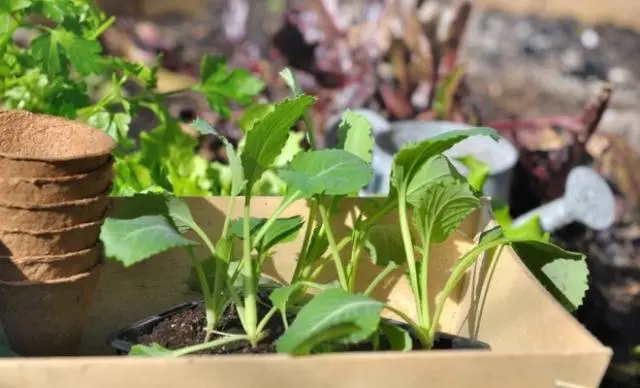
Even if you are not a happy owner of such facilities, you can always come up with something on your site: install arcs with double shelter, make impromptu greenhouses from improvised materials, and finally install seedling boxes on the veranda, terrace or in any other cool room.
What do cabbage seedlings need?
What conditions do cabbage need for good health and active growth and development?
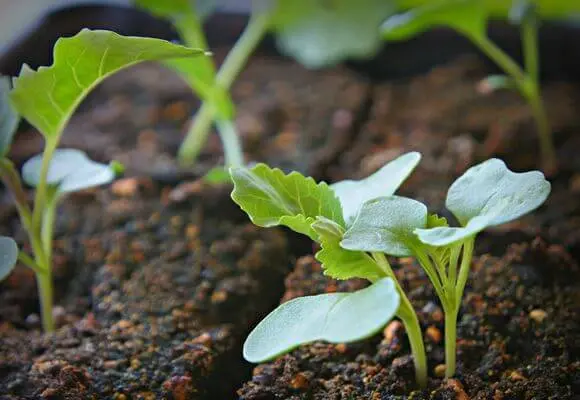
- Probably everyone, even novice gardeners, knows that cabbage is a cold-resistant plant. After all, not every vegetable crop that came to us from the warm Mediterranean is able to withstand frosts down to -8 ° C. Young cabbage plants are also relatively resistant to cold; in the seedling phase, they can tolerate a short-term temperature drop to -5°C.
- At the same time, temperatures from +16°С to +20°С are ideal conditions for growth and development.
- But cabbage does not tolerate high temperatures very well. Already at an air temperature of + 25 ° C and above, she feels depressed, and at + 35 ° she loses the ability to form a head, and young seedlings are likely to die.
- Cabbage is also a photophilous plant, it equally needs a long daylight hours and bright good lighting. With an insufficient level of illumination, the seedlings will develop poorly and slowly.
- Cabbage is quite demanding on watering and humidity of both air and soil. But she needs the greatest amount of moisture during the formation of a head.

During the growth of a leaf outlet, the need for moisture in cabbage is quite moderate. The soil should dry out slightly between waterings. True, the complete drying of the soil can lead to the death of young plants.
- Finally, cabbage is the most demanding of all vegetable crops for nutrition. She needs constant regular feeding, without which a good harvest cannot be obtained. But the need for them appears mainly after the development of 5-6 true leaves, that is, after planting cabbage seedlings in open ground. In the very first phase of seedling development, she needs top dressing in minimal quantities and she can get everything she needs from the nutrient soil in which she was sown.
Causes of wilting
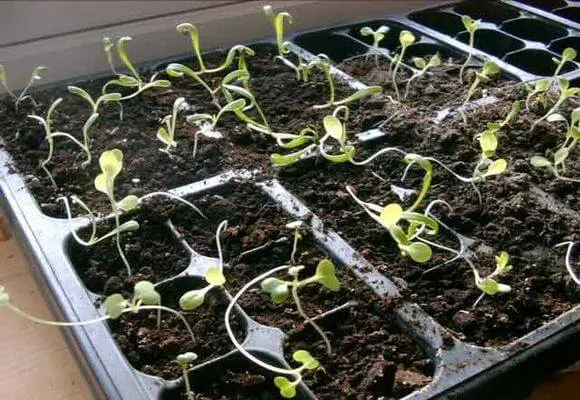
“Why is she withering?” – ask cabbage lovers. And now try to imagine or even check in practice what temperature is formed in the room of an apartment with central heating on the sunny windowsill of a south-facing window. It is under these conditions that cabbage seedlings most often live, since it is also a light-loving plant. For some time she still holds on with her last strength, but then sooner or later she dies, unable to cope with adverse conditions.
And novice gardeners cannot understand what happened, because they did everything, as with other vegetables. They placed the seedlings in heat, provided the maximum amount of light, even illuminated them with special lamps. Water abundantly, as cabbage requires. But she still disappears. Tomatoes and peppers grow side by side in the same conditions and feel great, but cabbage is bad.
Perhaps they even sow seeds for seedlings again and again, but the situation repeats itself and no one can understand at all what to do.
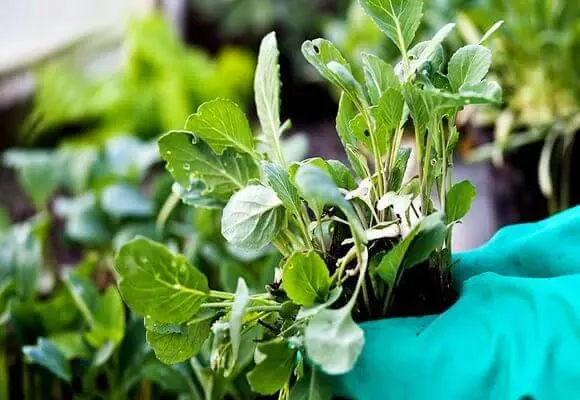
It is often remembered that cabbage is very susceptible to a variety of fungal diseases, and its seeds must be treated before sowing with special fungicides, in extreme cases, with a solution of potassium permanganate. If this has not been done, then they usually calm down, thinking that they have finally found the reason for failures with cabbage and that everything will work out next year. But the next year, after all the seed treatments and an additional spray of seedlings with biofungicides, nothing changes, the seedlings again wither and die.
But the fact is that all varieties of cabbage, especially white cabbage species, have one more feature in the care at the seedling stage. Cabbage seeds germinate well, quickly and quite amicably at a temperature of about + 20 ° C and even higher.
For white cabbage, it is better if the temperature does not exceed + 8 ° С + 10 ° С, for more heat-loving cauliflower, the maximum can rise to + 12 ° С + 15 ° С, but for any cabbage, this period of temperature decrease is strictly required at least at night time. Otherwise, we can assume that your seedlings are gone again. And sooner or later, unfortunately, it will happen. Therefore, if you grow cabbage seedlings in an apartment and you have a balcony, even unglazed, then you need to do the following. Immediately after the emergence of seedlings, build frost protection for seedlings from several layers of film and, without a doubt, put it on the balcony for 5-10 days.
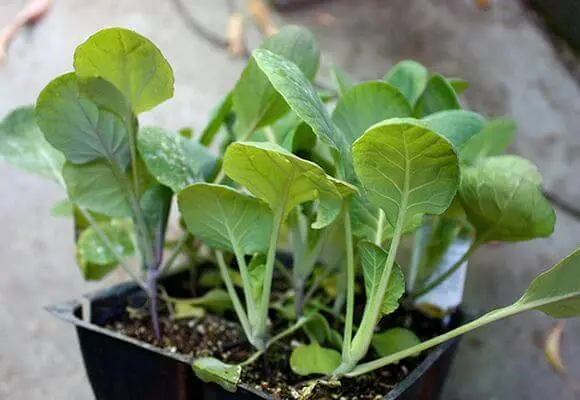
Difficulties after transplant
But even if you go through this first stage of cabbage development correctly, then several more tests await you. One of the most common problems when growing cabbage is its unhealthy appearance after being transplanted into other containers or outdoors. As a rule, after this procedure, the lower leaves of the cabbage seedlings turn yellow, and it fades to one degree or another. This is a completely natural reaction of plants to some damage to the roots, which is inevitable when transplanting seedlings.
It is also better to replant in very well spilled soil, almost liquid mud. A few days after transplanting, seedlings must be shaded from the bright sun and kept in warm conditions at a temperature of about + 20 ° C.
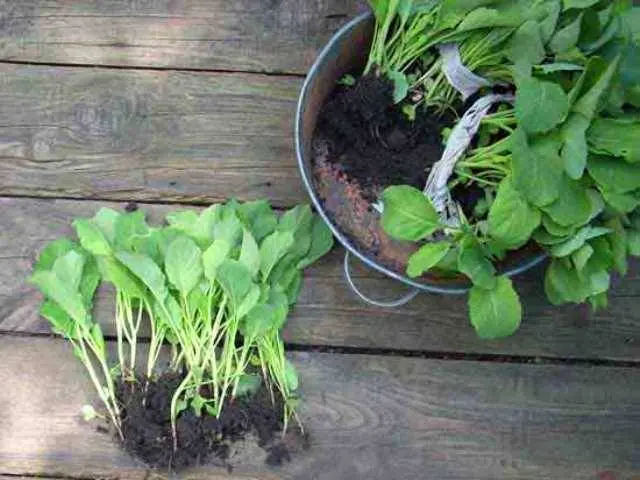
This can be done when picking seedlings in separate pots in the rooms. On the street, it is enough just to protect it from the bright sun until it completely takes root in new conditions.
Of course, the sight of withering cabbage seedlings cannot but torment the gardener’s heart, but in the case of transplanting it, you can be sure that in a few days it will definitely recover and begin to develop further with renewed vigor. True, this will happen only on the condition that a few days after transplanting, the cabbage seedlings will again be returned to cool conditions, preferably not higher than + 16 ° С – + 18 ° С.
For these purposes, you can simply open the window for ventilation and put the seedlings under a stream of cool air. You should not be very afraid of drafts, stuffy and hot air is much more dangerous for cabbage. However, if the seedlings have been excessively pampered from the first days of life, then drafts can be dangerous for them. But it is best to find a place for her with a constantly cool temperature, ideally if there is a difference of five to ten degrees between day and night temperatures.
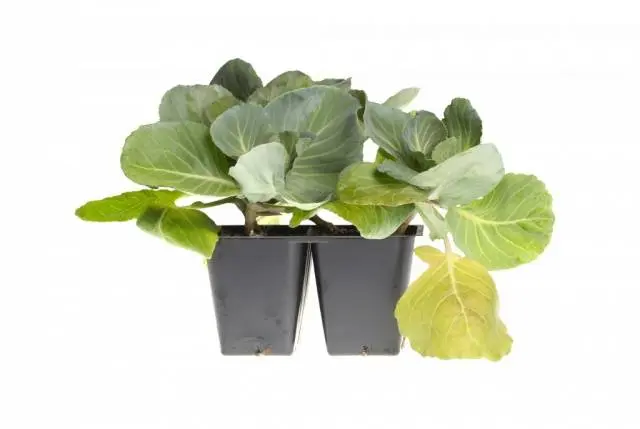
The solution
So, what happens in 90% of cases with cabbage seedlings? From the very first hours, she finds herself in unfavorable conditions that are too warm for herself. As a result, the root system is not able to fully develop, the stems are strongly elongated, and the plant immunity drops to zero. As a result, even the slightest mistakes in care, which in the normal state the plants would not have noticed, lead to an even greater deterioration in the condition of the seedlings. She begins to wither, turn yellow, sometimes immediately fall.
But what about the remaining 10%? They just represent those cases when the seedlings were affected by any infections or pests. Perhaps it was planted in soil with a more acidic reaction than it needs.
If all agronomic measures for processing seeds and caring for seedlings of cabbage are carried out on time and correctly, then such situations can almost be excluded. After all, cabbage, like all vegetables, seeks to grow, develop and delight with its harvest. It is only necessary to take into account its peculiar requirements and everything will be in order.










